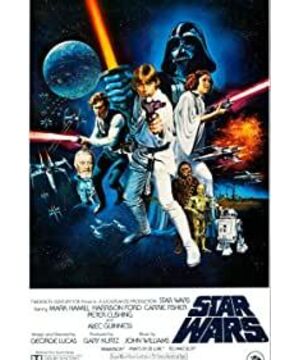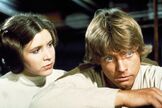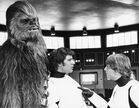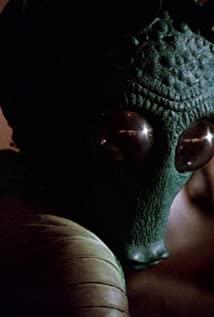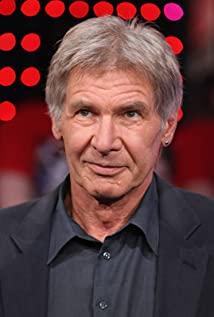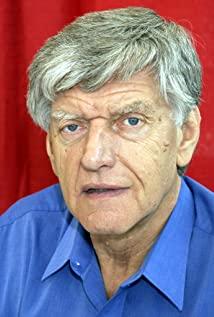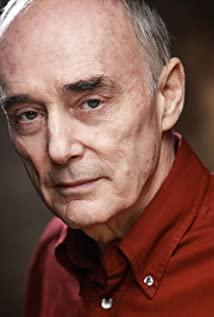A long time ago, there was a truck driver who was perplexed and perplexed by his ideals in life. He was looking for and troubled. Finally one day, he came across a destined treasure by chance, and the door to a new world was opened before him. This is the story of James Cameron's connection with the movie because of "Star Wars". Nowadays in the United States, it is difficult to find someone completely isolated from "Star Wars". This movie has been integrated into American culture and directly or indirectly affects the lives of everyone. For many American children, the story of Star Wars is recited. History is much simpler than reciting a table of multiplication formulas.
Strictly speaking, "Star Wars" is not a science fiction film, but a sub-genre-space fantasy, also known as space opera. It is a landmark work in the history of science fiction. It opens the adventure of traveling from one planet to another. Unlike the pessimistic science fiction films in the past, it provides a new perspective on the universe. At the same time, it also created the era of "second-hand universe" in science fiction movies. The interstellar space is full of traces of creatures that have survived for thousands of years. Without "Star Wars", the subsequent "Blade Runner" and "Mad Max" would not know what to do. trace.
George Lucas was born in 1944. Although the town he grew up in was far away from the war, fragments of artillery shells fell in every newspaper spread on the coffee table, lingering in the air. The impact of the remaining waves is far-reaching. The detached perspective of science fiction movies provides Lucas with a starry sky that can be swayed freely, allowing him to look back at the reality in the distant interstellar space. "Star Wars" tells the story of a "fascist" hegemony group occupying a republican democratic country, and a free organization rebels fighting against it. This story is inspired by the Vietnam War. The villain empire refers to the American emperor, the rebels are against the Viet Cong, and the emperor is probably the former President Nixon. Lucas also founded a religion based on the original force in the Star Wars universe. There is no detail or mystery, and it is full of secular meaning. It seems that any language that mystifies it and makes it scientific is a blasphemy against it. People who can perceive and use this power are called Jedi knights, and they play a key role in this confrontation between freedom and hegemony. The so-called "one person top ten divisions", but that's it. There are both the bright side and the dark side in the Force. The light is the freedom fighter, and the dark is the dominant hegemonic organization. At the same time, Star Wars is also a series of movies full of father-killing complex. The story continues to cycle in the apprentice-killing master and son-killing father. The bright side and the dark side continue to collide, which seems to have become an eternal curse. Therefore, some people think that "Star Wars" is a new myth that happened in the universe and was born in the 20th century.
"The real projector is the eyes and ears of the audience." The 50th Oscar awarded Star Wars the highest awards belonging to the eyes and ears-best editing, best visual effects, best sound, best art direction , Best Costume Design, Best Original Soundtrack: John Williams, Best Achievement Award: Sound Designer Ben Burt, other nominations such as Best Picture will not be mentioned for the time being. Lucas once said: "Sound is half of (life) experience." Successful sound can not only change what the audience can see, but also further stimulate the "conceptual resonance" between image and sound, that is, mutual influence and mutual influence. Achievement. The post-production of sound is divided into: dialogue, sound effects and music. When they appear at the right time and proportion, they will give the film the so-called "real" attribute. Among these three, Lucas pays much more attention to cool sound effects, majestic music and environmental sounds than vocal dialogues. Most of the time in the movie is either full of music or specious "dialogs" between aliens and robots.
Ben Burt geniusly created the whistling sound of the TIE fighter plane, which is actually a slow-moving elephant call; the buzzing sound of the lightsaber, which was made with the sound of scrapped televisions and projectors; Dass ·Vidana sounds terrifying breathing. In fact, this is the sound of Ben Burt breathing through a diving mask. He recorded his breathing sounds of three frequencies to distinguish Vinda’s different emotions; The voice of the alien creature Wookiee Chu Yi was made by enticing a bear that had been hungry for a whole day through food to make it roar and mix with the sound of sea lions. The secret of bringing alien creatures and robots to life on the screen is to make their voices have emotions. The following is a detailed demonstration by R2-D2 for us——
R2-D2-a trash can wearing roller skates, a robot with a camera as an eye, magically became one of the most popular characters with the electronic sound of beep beep beep. R2-D2 and C-3PO eased the serious mood in the Star Wars movies to a large extent, and are affectionately called the sci-fi beautified version of Don Quixote and Sancho Panza.
Another major function of sound effects is used on sports lenses. The sound automatically "fills up" the important movement process for the audience and completes the audiovisual memory. Ben Burt provided an audio-visual authenticity design for the spacecraft's speed of light jump. What further reaches the brain than the spacecraft is the sound of its space shuttle, which makes the audience convinced that they have seen the speed of light shuttle. There are many such usages.
The collaboration between John Williams and George Lucas was facilitated by Spielberg when Williams had just finished the soundtrack work for "Jaws". Before John Williams joined the Star Wars team, George Lucas tried to make the film’s music similar to Kubrick’s 2001: A Space Odyssey. He used Gusta in the temporary soundtrack. Holst, Antonin Dvořák, William Walton and the soundtrack of "Benxu", in anticipation of the effect of the drums echoing in the starry universe, full of old Lywood-style copper Wind music. The March [Star Wars Main Theme] composed by John Williams for "Star Wars" was selected as the greatest melody in film history, and it is still used in the Oscars awards ceremony to this day. This was the only part of the film that exceeded his expectations, Lucas said later. Spielberg expressed his collapse. At that time, he was not only forced to listen to music for an entire hour and a half on the phone, but also worried that Williams' talent would be drained by this music, and Williams had to do it for himself. "The Third Kind of Contact" composes the music.
Star Wars uses the romantic style of the 19th century with liberal motifs as the keynote of its music. In Star Wars, Williams adopts the character theme method, using musical language to distinguish and connect the characters and plots in the play. This method of scoring was pioneered by the German romantic composer Wagner in the 19th century.
Whenever yellow characters spread over the entire screen, and loud brass music and horns sounded together, the audience knew that a heroic drama was about to unfold. The rolling subtitles imitate the design of "The Flying Man Gordon", the Rondo-style suite, adopts the Canon-style creation technique, the hard theme led by the brass music and the more romantic soft theme played by the strings. The overture that led the entire Star Wars series. Williams’ music is a confidant of Lucas’s films—Star Wars is not only a struggle between freedom and justice, but also a story about human emotions, betrayal and awakening, guardianship and choice, love and morality, the interweaving of rigidity and softness. Entanglement is the reason why "Star Wars" can last forever.
The main tune plays the role of beacon in the movie. Each main character is assigned to a theme song by Williams, and this theme song is also applied to things closely related to it. In "The Empire Strikes Back", The Imperial March is the core movement of the entire movie, the theme song of the Imperial Army, and it also appears as the theme song of Darth Vader. He is also nicknamed the villain with his own BGM. When the dark brass music filled with militarism sounded, Darth Vader's cold, blood-soaked black helmet appeared before his eyes. This piece of double-themed variation is extremely close to the life of Darth Vader, the black jazzer. Darth Vader’s life was destined to be extraordinary—his mother gave birth to him, taking heaven as his father, named Anakin Skywalker, and spent the first few years of his life as a slave. Discovered by the Jedi Knights for his super talent. He fell into darkness because of bigotry and love, and redeemed because of love. The second theme dominated by woodwind sound reproduces his life as Anakin, and the intertwined variation of the dual themes hints at the tenderness hidden in his heart as an imperial eagle.
Anakin also predicted success and failure. Although his master Obi-Wan trusted him, the Jedi elders saw his connection with the dark side. After he was awakened by love and sacrificed for love, he was accepted by the Jedi Knights. At his funeral, he had the music belonging to the Jedi Knights-soothing but powerful, tender and strong.
The combination of the soundtrack with the plot line and the emotional line is also a major feature of Williams' creation. In "Star Wars Episode 1: Phantom Threat", if you listen carefully, you will find that Williams had already informed of the hidden identity of the villain. The Sith the Great was the controller of the “fascist” hegemony group. He split the Republic with violence and induced Anakin to plunge into the dark side because of his identity as the president of the Republic’s Senate. This identity was obtained because he helped Nabu Xing regain peace. He thought it was a prelude to peace, but he did not expect it to be the finale of freedom. This hint appeared when the people of Nabu Xing cheered for the regaining of freedom. In the celebration music, there are hidden variations on the theme song of the emperor. Today’s actions, today’s struggle for freedom and independence, will be free in the future. And the cost of life.
If you want to ask movie fans about their favorite shot, it's probably the sunset in "Star Wars." Two suns hung in the sky, and the sky was blue and purple. Luke Skywalker walked out of the semi-underground building, and the sound of a slow and steady horn sounded. He climbed the small slope and looked at the two as usual. Only Golden Crow, it seemed that someone was calling him, he knew that he didn't just belong here. A great adventure is about to begin.
May the force be with you.
references:
1. "How Star Wars Conquered the Universe" [M] Chris Taylor
2. "Sound Effects Bible: Hollywood Sound Effects Creation and Recording Techniques" [M] Rick Wells
3. "Audiovisual: The Construction of Illusion" [M] Michel Sion
4. "John Williams "Star Wars" Movie Music Analysis and Interpretation" [D] Li Ye
5. "John Williams "Star Wars" Film Music Research" [D] Zhou Jiangzi
6. "Study on John Williams' Composition Techniques" [D] Yang Jingyi
View more about Star Wars: Episode IV - A New Hope reviews


